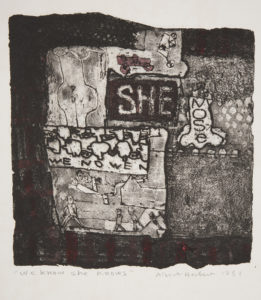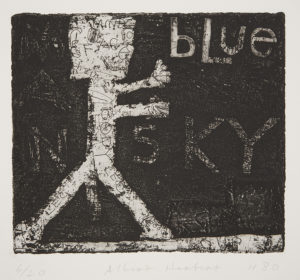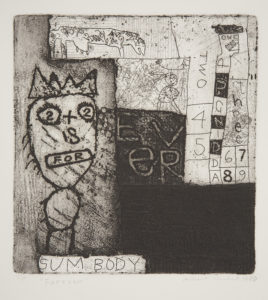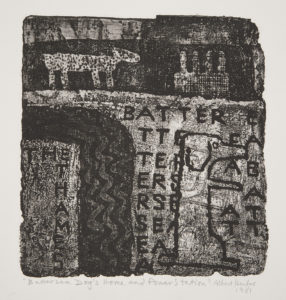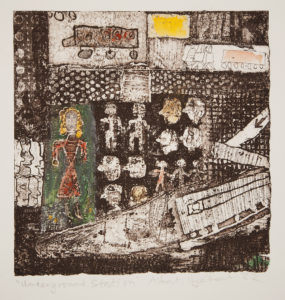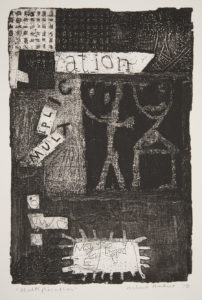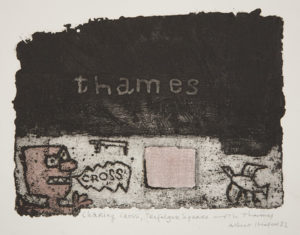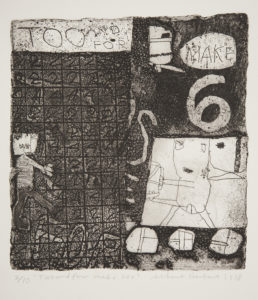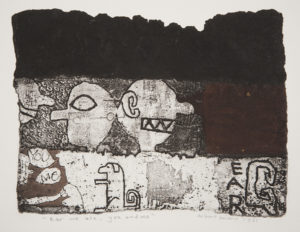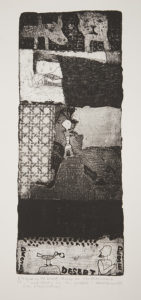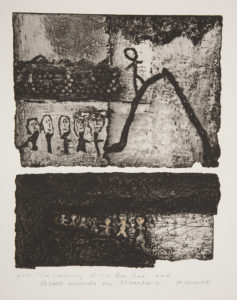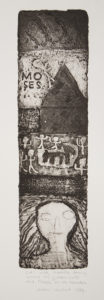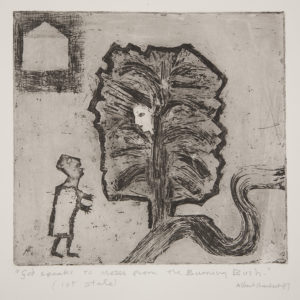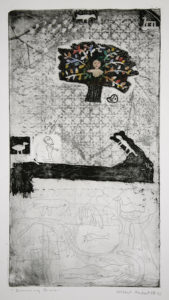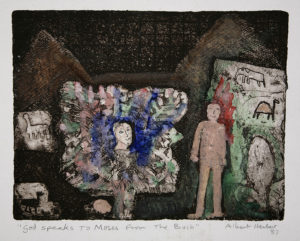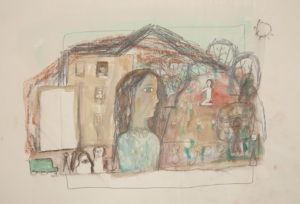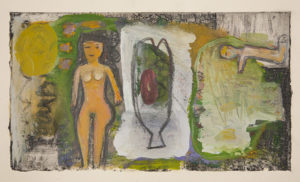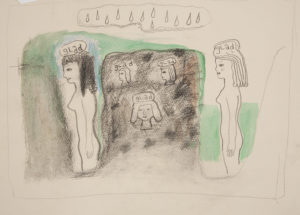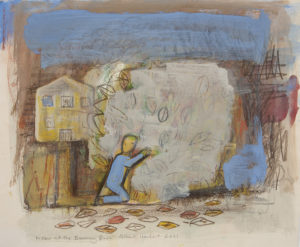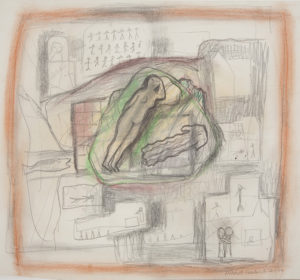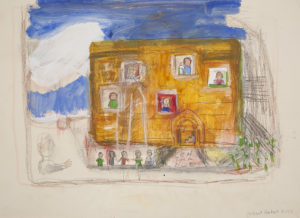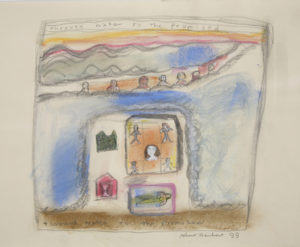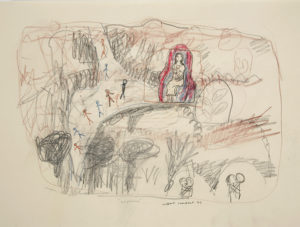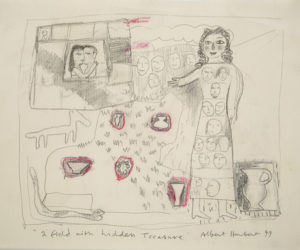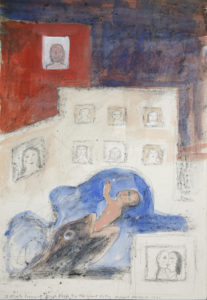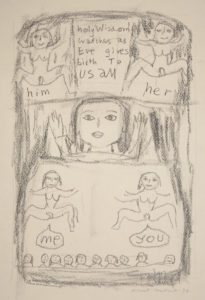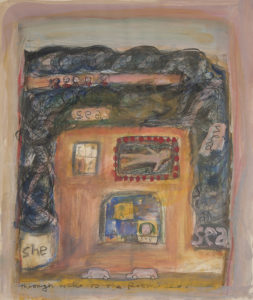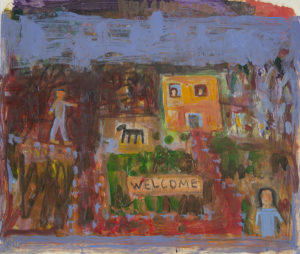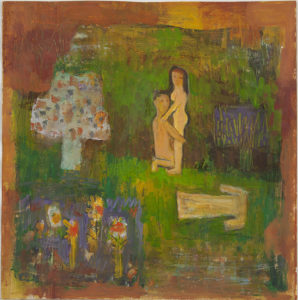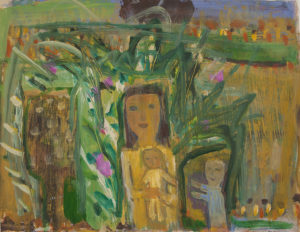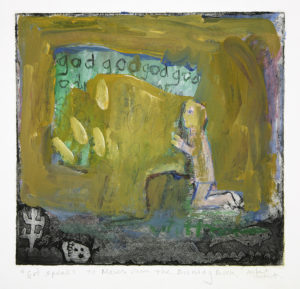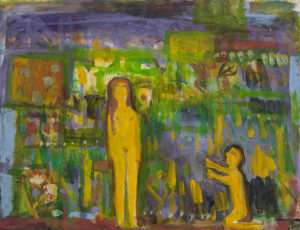When Albert Herbert was teaching at St Martin’s School of Art in the 1960s and ’70s, it was a centre for the avant-garde: Herbert invited Yoko Ono to give a performance lecture to the students, and his colleagues and friends included the pioneering conceptual artist John Latham. Herbert had been painting in a representational way since leaving the RCA in the 1950s, but in the late 1960s he repressed his drive to make images that tell stories and made a series of paintings covered with abstracted, indecipherable texts and experimented with photography.
Eventually he found that he ‘couldn’t paint at all’ and intuitively wanted to find a way back to figuration. He found it in etching, which he worked at intensively over a ten-year period: ‘I used to creep down to the etching room in the basement at St Martin’s and work at these little prints, literary, illustrative, with bits of theology hiding behind childish jokes; all the opposite of what my modernist colleagues were teaching on the top floor.’ Games with words and primitive graffiti were followed by a series of etchings of Trafalgar Square in which he revealed symbolic, archetypal forms such as ‘that feminine dome of the National Gallery, and that eternal river flowing at the bottom by Charing Cross’. When he began to paint again, he retained the habit of ‘working small’ from making prints.
More works by Albert Herbert at England & Co

